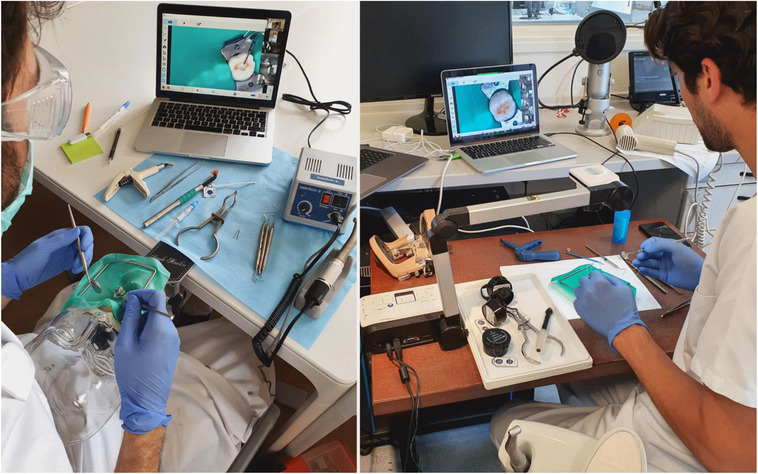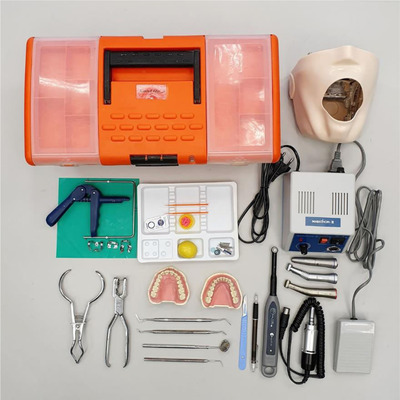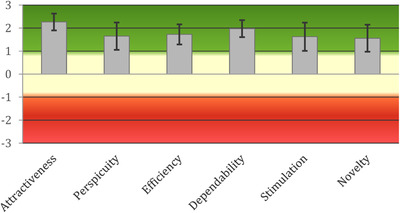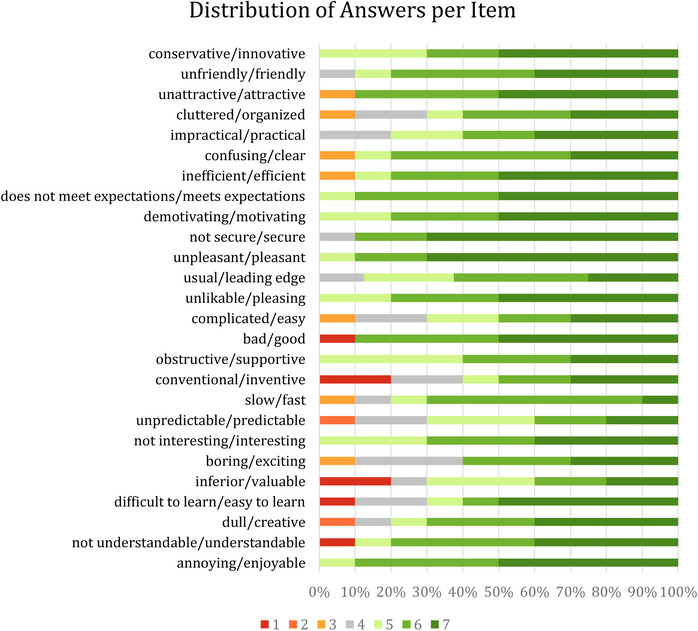1. PROBLEM
The COVID‐19 pandemic has profoundly changed the practice of dentistry and dental education. While innovative solutions have been proposed in every dental school to ensure educational continuity, they have all come up against the challenge of maintaining practical training at a distance. 1 Indeed, simulation equipment is often located within the university or hospital. This can lead to a decrease in fundamental motor skills in dentistry. 2
Some authors propose the development of virtual reality and haptic technologies as an outcome. Today these solutions are still underdeveloped and difficult to generalize, requiring heavy and expensive equipment that cannot be easily moved outside educational institutions. Their use is not yet recommended as a common method of student assessment. 3
2. SOLUTION
An innovative way for dental students to access simulation equipment outside of the university is based on the combination of widely proven videoconferencing tools and simple, autonomous, and transportable equipment. The teacher broadcasts the content thanks to an ambient camera (or webcam) and a tabletop visualizer via a videoconferencing platform (e.g., Zoom [Zoom Video Communications, San Jose, CA, USA]).
Guided by the live teacher's explanations and videos, the students simultaneously put into practice the techniques presented using their own equipment at a distance (e.g., at home) (Figure 1). The equipment includes a general case, belonging to the student, including a micromotor and a lightweight and transportable simulator easily attached to a desk (e.g., Nissin Simple Manikin III [Nissin Dental Products Inc, Kameoka City, Kyoto, Japan]) and a specific exercise case, delivered on demand, whose content is adapted to the current session and its complexity (Figure 2). Students should have access to the videoconferencing platform via a PC, smartphone, or tablet. The session is interactive: participants can ask any question to the teacher orally or through the chat system and show their work via their webcam for advice or guidance. The sessions can be recorded and made available on online video hosting platforms.
FIGURE 1.

On the left, a student performing the hands‐on training. Zoom videoconferencing is broadcasted on his personal computer. On the right, a teacher performing the hands‐on training.
FIGURE 2.

View of the equipment used for a dentistry practical work, supplemented with specific materials for a restorative dentistry session contained in a transportable toolbox.
The technical feasibility was assessed for a practical training session as a proof of concept. For this purpose, 10 fifth‐year volunteer students, in isolated conditions, took part in 2 successive 30‐minute sessions of practical work in restorative dentistry and prosthodontics. Several aspects of the practical trainings were evaluated using the User Experience Questionnaire (UEQ). 4
3. RESULTS
Despite a limited number of students with a potential selection bias, the technical feasibility of remote practical work is conceivable. UEQ has qualified the session as attractive, pragmatic, and fun (Figures 3 and 4). The advantages are: (1) allowing pedagogical continuity in the learning of motor skills during social distancing; (2) keeping human connection through interaction in real‐time with the teachers; (3) allowing students to spend more time practicing, either during remote‐training sessions or independently; (4) providing flexibility and new opportunities for the teacher for training courses; and (5) can be applied to reinforce teaching through interuniversity exchanges. 5
FIGURE 3.

Results of the User Experience Questionnaire of the 10 volunteer students, in the fifth year. The vertical bar represents the confidence interval. A comprehensive impression of user experience on a scale ranging from −3 to +3 is obtained through a score of attractiveness, perspicuity, efficiency, dependability, stimulation and novelty. Values between −0.8 and 0.8 represent a more or less neutral evaluation of the corresponding scale, values >0.8 represent a positive evaluation and values <−0.8 represent a negative evaluation. The range of the scales is between −3 (horribly bad) and +3 (extremely good).
FIGURE 4.

Distribution of answers of 10 volunteer students in the fifth year by single item of the User Experience Questionnaire. 10% here represents one participant and all the corresponding answers. The answers for each item are very positive (scores are mostly 5 to 7). This figure was obtained through the UEQ analysis tool (https://www.ueq-online.org).
Due to technical limitations, carrying out an extemporaneous assessment is difficult. An asynchronous rating method could be envisaged. Moreover, the preparation of the training boxes should not be neglected, as any modification is impossible at home. Future work should consider the educational and/or clinical benefit of this solution compared to the current pedagogical arsenal.
CONFLICT OF INTEREST
The authors have no conflicts of interest in relation this research.
ACKNOWLEDGMENTS
We would like to thank the Dean of the faculty of dental medicine in Toulouse Pr. Philippe Pomar, Serge Corradi, and the students that attended this dental practicum.
Galibourg A, Delrieu J, Monsarrat P, Joniot S, Maret D, Nasr K. e‐dental practicum: A way to maintain student hands‐on training during disruptive crises. J Dent Educ. 2021;85(Suppl. 1):1148–1151. 10.1002/jdd.12341
Antoine Galibourg and Julien Delrieu contributed equally to this work.
REFERENCES
- 1. Chick RC, Clifton GT, Peace KM, et al. Using technology to maintain the education of residents during the COVID‐19 pandemic. J Surg Educ. 2020;77(4):729‐732. [DOI] [PMC free article] [PubMed] [Google Scholar]
- 2. Iyer P, Aziz K, Ojcius DM. Impact of COVID‐19 on dental education in the United States. J Dent Educ. 2020;84(6):718‐722. [DOI] [PubMed] [Google Scholar]
- 3. Nassar HM, Tekian A. Computer simulation and virtual reality in undergraduate operative and restorative dental education: a critical review. J Dent Educ. 2020;84(7):812‐829. [DOI] [PubMed] [Google Scholar]
- 4. Laugwitz B, Held T, Schrepp M. Construction and evaluation of a user experience questionnaire. Comput Sci. 2008;5298:63‐76. [Google Scholar]
- 5. Loch C, Brunton PA, Rahim ZA, et al. The teaching of removable partial dentures in dental schools in Oceania. J Dent. 2020;95:103. [DOI] [PubMed] [Google Scholar]


